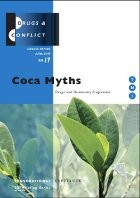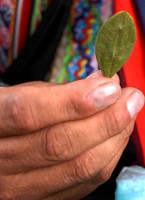Coca Myths
The present issue of Drugs & Conflict intends to debunk and disentangle the most prominent myths surrounding the coca leaf. It aims to clear the air and help steer the debate towards a more evidence-based judgement of the issues.

Downloads
Authors
History has been unjust to the coca leaf, denying it distribution on a global scale despite its proven value as an energy enhancer, while limiting its potential for widespread use as a healthy alternative to all sorts of chemical stimulants currently available on the world market.
The inclusion of the coca leaf in the 1961 Single Convention’s lists of drugs liable to abuse, and therefore subject to international control, has not produced the effect originally desired: traditional use - whether by chewing the leaves or drinking them in an infusion - is still widespread, though largely limited to a few countries where such practices have historical antecedents. Potential demand is high, particularly for coca tea. The ban of even this innocuous custom is still one of the demands repeated annually in the statements of the INCB, the interpretive body of the UN control system. This unreasonable posture has recently led to a formal request from one government to abrogate the articles of the 1961 Convention that demand abolishing of coca leaf chewing.
The present issue of Drugs & Conflict intends to debunk and disentangle the most prominent myths surrounding the coca leaf. It aims to clear the air and help steer the debate towards a more evidence-based judgement of the issues. Discussion has been stuck for too long at the point where it is now, and - sometime in the near future - political decisions will need to be made on coca’s fate and legal status.
- Go to the online summary
- Towards a world market for coca leaf? Pien Metaal
Pages: 24

